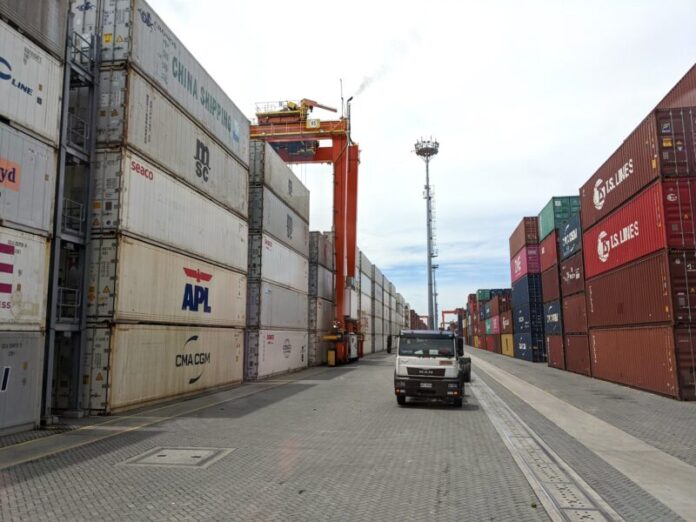-
A time release study to identify and troubleshoot cargo clearance bottlenecks in all its ports is targeted for completion by the Bureau of Customs before the year ends
-
Acting Customs Commissioner Yogi Filemon Ruiz said BOC has adopted the World Customs Organization’s TRS to measure the actual trade facilitation performance of BOC
-
Ruiz said a copy of the completed TRS will be made available on the BOC website
The Bureau of Customs (BOC) is conducting a time release study that is targeted for completion by yearend to identify and troubleshoot cargo clearance bottlenecks in all its ports nationwide.
Acting Customs Commissioner Yogi Filemon Ruiz said the BOC has adopted the World Customs Organization’s (WCO) TRS model to measure the actual trade facilitation performance of BOC.
READ: BOC eyes new time release study to spot cargo bottlenecks
“The time release study is a strategic and internationally recognized tool to measure the actual time required for the release and/or clearance goods from the time of arrival until the physical release of cargo, with a view to finding bottlenecks in the trade flow processes and taking necessary measures to improve the effectiveness and efficiency of border procedures,” Ruiz said in a presentation during a forum hosted by the Italian Chamber of Commerce in the Philippines.
Ruiz said the TRS “is a unique tool and method to review customs clearance procedures and measure the administration of the agency’s performance as it directly relates to trade facilitation at the border.”
The TRS covering all ports in the country is a “work in progress” that is targeted for completion by the end of the year, Ruiz said, adding that a copy of the completed study will be available on the BOC website.
The TRS will measure the pre-customs, customs, and post-customs processes for imports, while its covers customs and post-customs processes for exports.
Since 2019, BOC has been releasing annual TRS reports to identify delays in cargo clearance and to formulate corrective measures. The studies were done with the assistance of the WCO and Asian Development Bank.
In 2019, the TRS covered the country’s biggest port and collection district, Manila International Container Port (MICP).
The 2019 MICP TRS highlighted the need for a paperless customs environment and showed that full computerization and automation will avoid the need to manually transfer or take import documents from one office to another, and will address delays in the processing and release of shipments at ports.
According to the 2019 TRS, the average time to process an import shipment in MICP was two days, 10 hours, and three minutes, while the average time to process an export shipment was one hour and 11 minutes.
The 2020 TRS covered more ports, namely Davao, MICP, Mindanao Container Terminal (MCT), Port of Manila (POM), and Zamboanga.
According to the 2020 TRS, the average processing time for imported containerized cargo at the five ports were as follows:
- MICP: 1 day, 22 hours and 9 minutes
- POM: 2 days, nine hours and 44 minutes
- Davao port: 2 days, 15 hours and 37 minutes
- MCT: 1 day, 12 hours, and 5 minutes
- Zamboanga: No containerized cargo arrived at this port during the TRS period
For processing of exports at the Manila ports, the average time, which covered the processing of export declaration from submission at the Customer Care Portal System (CCPS), were as follows:
- MICP: 4 hours, 38 minutes and 3 seconds
- POM: 1 day, 13 minutes and 30 seconds
For exports at the Mindanao ports, processing of which starts from the submission of export declaration to issuance of Authority to Load, the average processing times were the following:
- Zamboanga port: 3 days, 15 hours, 28 minutes and 21 seconds
- Davao port: 21 hours, 21 minutes and 9 seconds
- MCT: 19 hours, 6 minutes, 13 seconds
The 2020 TRS showed processing at BOC improved with the introduction of computerization and online systems and enhancement of risk management.
For the 2021 TRS, meanwhile, 12 ports were covered, and the results were as follows:
- Cebu – import: four days, seven hours, 17 minutes; export: one day, 12 hours, 29 minutes
- Clark – import: five days, 12 hours, 55 minutes; export: 10 minutes
- Subic – import: two days, 12 hours, 11 minutes; export: 56 minutes, 40 seconds
- Ninoy Aquino International Airport – import: three days, 11 hours, 35 minutes; export: 11 minutes, 40 seconds
- Aparri – import: ongoing verification; export: six days, 17 hours, 37 minutes
- Batangas – import: five days, two hours, nine minutes, 50 seconds; export: 14 hours, six minutes
- Iloilo – import: two days, one hour, 24 minutes; export: two hours, 13 minutes
- Legaspi – import: 14 hours, 21 minutes; export: four days, 16 hours, 34 minutes
- Limay – import: 22 hours, 57 minutes, 15 seconds; export: five hours, 32 minutes
- San Fernando – import: two days, two hours, eight minutes; export: 17 hours, 54 minutes, 40 seconds
- Surigao – import: five days, 18 hours, 33 minutes; export: two days, 15 hours, eight minutes
- Tacloban – import: ongoing data verification; export: 20 hours, 26 minutes – Roumina Pablo





